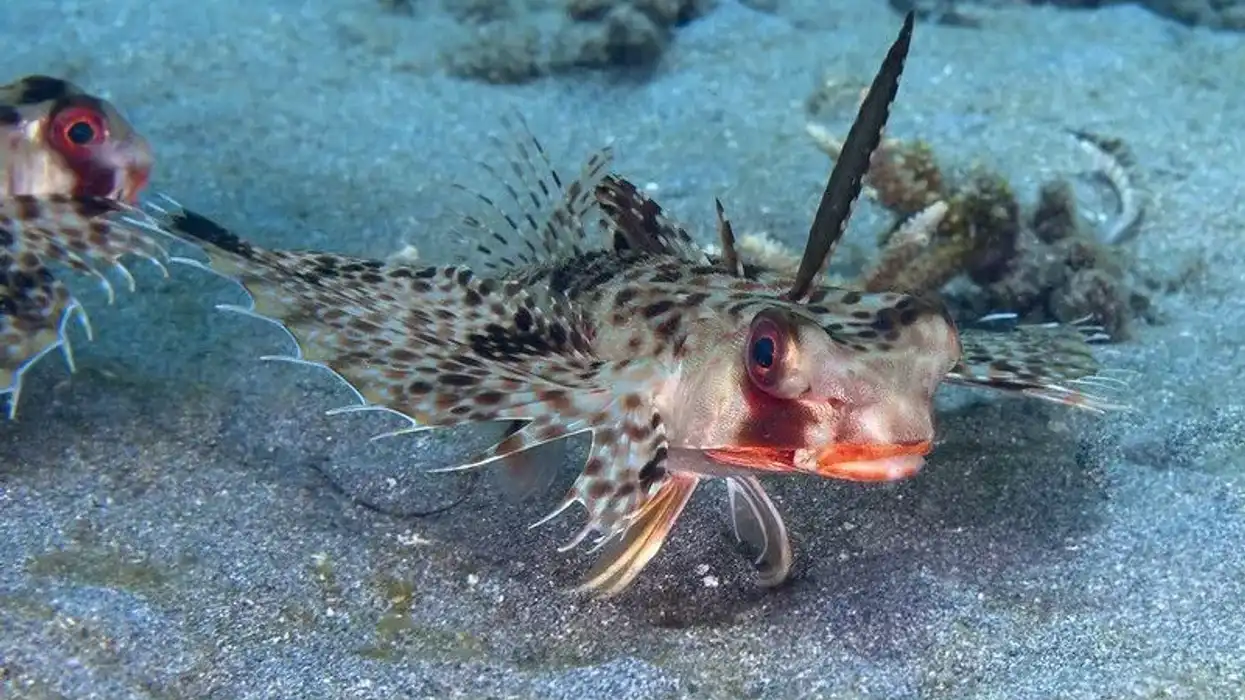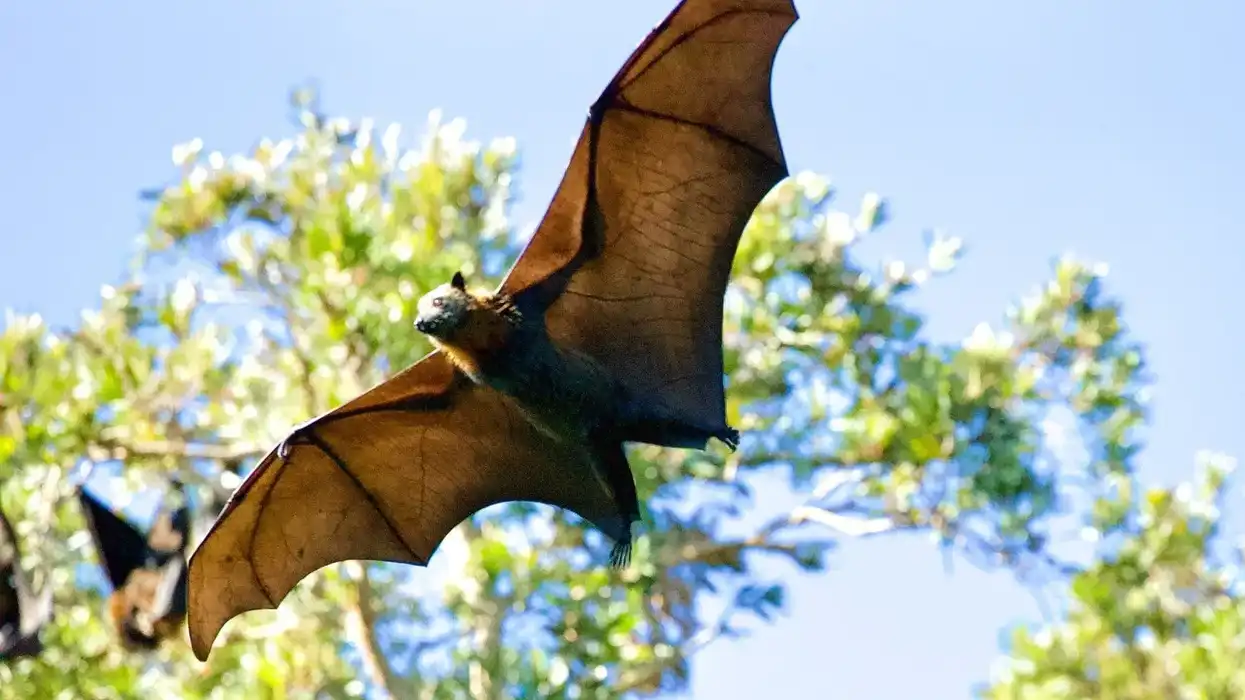The northern gannets are spectacular birds and one of the largest seabirds of the North Atlantic. They are the largest species in the Sulidae family of gannets.
As it is a seabird, it is native mostly to the coast of the Atlantic Ocean. Northern gannets fly with slow and deep wingbeats when they search for food which is exclusively fish.
When they find a fish, they dive straight down with spectacular plunges and at a great speed. They can hunt for fish either alone or sometimes in large flocks.
This bird has excellent vision and does vigorous vocalizing which helps it to catch fish and feed and also to avoid collisions with other gannets while plunge-diving. The only time they come down to dry land is during the breeding season when they settle on oceanside cliffs.
To know more about this seabird and its habits, continue reading this article. If you like reading about this magnificent bird then you can also check out facts about kagu and marbled murrelet.
Northern Gannet Interesting Facts
What type of animal is a northern gannet?
Northern gannets are spectacular seabirds.
What class of animal does a northern gannet belong to?
Northern gannets belong to the class of animals called Aves.
How many northern gannets are there in the world?
The global population size of northern gannets is considered to be around 1,500,000 to 1,800,000 adult individuals.
Where does a northern gannet live?
Northern gannets can be found on both sides of the North Atlantic. To the north, they can be found in the Arctic and as far south as the east of subtropics and the west Atlantic coast.
In the winters, they are dispersed but in the summers they usually stay within 310 mi (500 km) of their breeding colonies.
In the winter, they can go as far south as the Gulf of Mexico to the Caribbean and from northwestern Africa to the Republic of Cape Verde. They can also be found in high numbers in northeastern North America and Western Europe during the breeding season.
What is a northern gannet habitat?
Northern gannets can be typically found on the edge of the sea, on rocky cliffs, and sometimes on slopes and flat ground. They live in cold and temperate waters.
Who do northern gannets live with?
Northern gannets forage and are social beings that live with their flock. They can even be seen hunting together on occasion.
How long does a northern gannet live?
The northern gannet (Morus bassanus) lives as long as 35 years of age in the wild.
How do they reproduce?
Northern gannets are monogamous birds that mate for life. When a male bird becomes an adult and reaches the age of sexual maturity, they find a breeding site, marks its territory, and then starts looking for a suitable mate.
After mating, the pairs fight for and defend the breeding territory together. There are specific calls and displays to attract a potential breeding mate.
Males usually try to attract potential mates by shaking their heads back and forth. They also perform a 'headshake-and-reach' in which they shake their head and then dip their bills toward the nest to indicate that they are interested in breeding.
Northern gannets come back to the same nesting site every year in the breeding season. The oldest birds are the first to come back.
Females lay only one egg between the end of April and mid-June but they can lay up to three replacement eggs if their eggs are lost. The eggs are almost 3.7 oz (105 gm) and are pale blue-green.
They hatch after 42 to 46 days. Hatching starts in early June and lasts until early July. Young ones are then brooded for 13 weeks until they are fully fledged.
What is their conservation status?
The IUCN has listed this North American bird as Least Concern in their Red List. Their population trend is known to be increasing.
Northern Gannet Fun Facts
What do northern gannets look like?
Adults of this species are white with black wingtips. Adult plumage or feathers are identical in both males and females. Adults have a crown yellow and a pale blue bill.
It also has a black jagged mandible. The legs and feet are black-gray with a line that runs down the legs. The line is bluish-green in the female of the species and yellow-green in the males of the species.
The tail of these birds is long and tapers a little. In adults, the bill is long, pointed, stout, and straight and the eyes are bright blue. In northern gannets, both males and females look the same and the only difference is that males are slightly larger than females.
How cute are they?
Northern gannet birds are extremely cute and attractive to look at. Their beautiful eyes add to their cuteness.
How do they communicate?
There are a range of visual displays and a variety of calls that these birds use to communicate. Most of their visual displays are related to protecting and defending their nesting areas and the young such as jabbing and gaping.
They also display threats by bowing and thrusting their head and body forward several times. Appeasement or excitement is displayed by tucking the bill in the breasts which sometimes makes the bill invisible.
The young make cheeping calls while hatching. They also make sounds while begging for food from their parents and 'yap' when a stranger comes near the nest. Adult northern gannets are very noisy birds, especially when in large groups.
Adults make harch landing calls like 'rah-rah' and 'urah' which are loud and metallic. Hollow groans while starting short runs can also be heard. A 'krok-krok' sound is also made by these birds while taking low flight above sea or swimming.
How big is a northern gannet?
Male northern gannets are 36.6-43.3 in (93-110 cm) long and female ones are 36.4-40.9 in (92.5-104 cm) long. They have a wing length of 19-21 in (48.4-53.5 cm). These birds are the size of a goose or sometimes even larger. They can be said to be larger than a great black-backed gull and smaller than a brown pelican.
How fast can a northern gannet fly?
This North American bird is among one of the fastest and most agile seabirds. These birds can fly at an average of 40 mph (65 kph).
How much does a northern gannet weigh?
The weight of these birds is somewhere between 5.4-7.9 lb (2470-3610 g) and females weigh more than males.
What are the male and female names of the species?
Males are referred to as cocks and females are referred to as hens.
What would you call a baby northern gannet?
The baby of a northern gannet is known as a chick, just like other baby birds.
What do they eat?
A northern gannet's diet consists of fish and squids exclusively and nothing else. They feed on small fish with a size between 1-12 in (2.5-30.5 cm) and mainly eat that fish that swim in schools. The type of fish they prey on includes herring, sand lance, cod, pollack, and menhaden.
Are they dangerous?
Northern gannets are not dangerous birds but can become very aggressive when it comes to securing and protecting their nests.
Would they make a good pet?
Northern gannets usually live in cold and temperate regions and are not suitable to be kept in captivity or as pets.
Did you know...
The meat of the chick of a northern gannet is a delicacy and is known as 'guga'. Guga is said to taste like 'mackerel-flavored chicken'.
A northern gannet is also known as a solan or a solan goose (Sula bassana).
How do gannets die?
The main reason why northern gannets die is due to global warming. As their diet depends on the availability of fish, when sea temperatures rise and the fish stock diminishes, northern gannets are forced to flee from their nesting sites for longer periods which affects their population.
How fast can a gannet dive and catch fish?
The speed of northern gannets is very fast, especially when they dive to catch a fish. These birds can reach an average of 62 mph (100 kph) when northern gannets dive to prey on fish.
Here at Kidadl, we have carefully created lots of interesting family-friendly animal facts for everyone to discover! Learn more about some other birds including rockhopper penguins or black-necked stilt.
You can even occupy yourself at home by drawing one on our Northern Gannet coloring pages.









